Top 10+ Deadliest Events In American History
 |
| Top 13 Deadliest Events In US History. Photo KnowInsiders |
| Contents |
As many Americans prepare to toast their country’s past on the Fourth of July, there’s no escaping that not every facet of that history has been worth celebrating. There were dark deadly events in the US history that you should know.
Top 13 Deadliest Events In US History
1. American Revolution (1775-1983)
The American Revolution, also known as the American Revolutionary War or the United States War of Independence, was a 1775–83 insurrection that led to the political independence of 13 of Great Britain's North American colonies and the eventual formation of the United States of America.
The British attempts to assert greater control over colonial affairs after having long followed a policy of salutary neglect led to a more than ten-year period of growing estrangement between the British crown and a significant and influential portion of its North American colonies. Early in 1778, the conflict was a civil war within the British Empire; however, in 1778 and 1779, France and Spain joined the colonies in their fight against Britain, turning the conflict into an international conflict. The Netherlands, which gave the United States diplomatic recognition and financial support, was fighting its own war with Britain at the same time.
| Throughout the course of the war, an estimated 6,800 Americans were killed in action, 6,100 wounded, and upwards of 20,000 were taken prisoner. Historians believe that at least an additional 17,000 deaths were the result of disease, including about 8,000–12,000 who died while prisoners of war. |
2. The Civil War (1861-1865)
 |
| Photo American Battlefield |
Between 1861 and 1865, the worst war in American history claimed the lives of who knows how many people. This war didn't cost the most in terms of lives lost, property destroyed, or damage, but it did bring about a moral collapse in the nation. It would later come to characterize the struggle for racial justice and general morality.
The Confederates, who represent the south, would assert that the country needed slavery and that it should be expanded. Slavery was opposed by the Union, which represented the north, on the grounds that it was morally and legally wrong. As their only option at the time, the Union fought to keep slavery in the South.
In the Civil War, approximately 620,000 people perished. 238,000 Confederate soldiers and 360,00 Union soldiers each died in combat. 238,000 people died in order to bring our nation to its knees and bring shame on this great nation, while 360,000 died in the fight to keep America American. The Civil War was fought over racism, a morally repugnant and evil system, and it was fought against ourselves. The fact that our nation was almost torn apart before it turned 100 years old is what makes this so disturbing—we are at war with ourselves. It demonstrates how two diametrically opposed arguments with substantial support on either side can be fatal and bring our democracy and nation to their very knees.
3. World War I (1914-1918)
World War I, also known as the First World War or the Great War, was an international conflict that engulfed the majority of the European countries, as well as Russia, the United States, the Middle East, and other regions, between 1914 and 1918. The war pitted the Allies—primarily France, Great Britain, Russia, Italy, Japan, and, starting in 1917, the United States—against the Central Powers—primarily Germany, Austria-Hungary, and Turkey. The Central Powers were defeated at its conclusion. In terms of the amount of death, destruction, and carnage, the war was essentially unprecedented.
| There were 20 million deaths and 21 million wounded. The total number of deaths includes 9.7 million military personnel and about 10 million civilians. |
4. The 1929 Great Depression
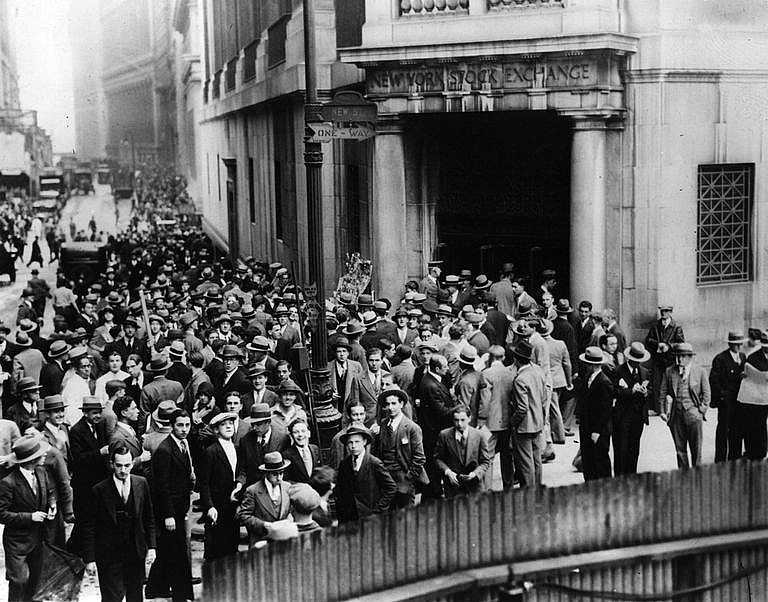 |
| Photo investopedia |
America experienced its worst financial crisis in 1929, and up until this point, nothing has come close to it. Many people may not be aware that the Great Depression was primarily brought on by the 1929 stock market crash, but it was also brought on by a number of other factors, such as debt, large bank loans, and the Roaring 20s, a period in which America had reached its zenith and was booming. Then, by 1929, the entire peak descended abruptly and brutally. Food became scarce, money was scarce to nonexistent, jobs were hotly contested, and health and well-being were at an unimaginable low. The once "impenetrable" stock market was breached, sank like an anchor, and took America, jobs, food, and, yes, people's lives with it. As a result, America began to resemble a third-world nation.
According to estimates, 23,000 people killed themselves as a result of the Great Depression and their bankruptcy. 20,000 people filed for bankruptcy overall, too. In America, the unemployment rate at the time was a record-high 25%. FDR's New Deal was the only thing that managed to save America from this terrible financial crisis. In order to combat the Great Depression, FDR's New Deal introduced new jobs and strategies. One of the most effective presidential initiatives we have ever seen was the New Deal. The Great Depression brought America to heights that it has not yet attained. Although the stock market has not experienced a significant crash since then, that does not preclude the possibility of another Great Depression because, as we all know, nothing is ever certain in America.
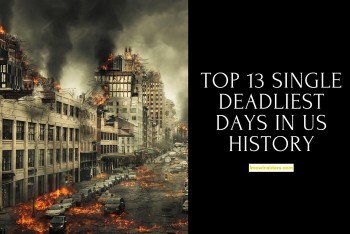 Top 13 Single Deadliest Days In US History Top 13 Single Deadliest Days In US History What are the deadliest single days in the US? How many casualties recorded on those days? From Pearl Harbor, 9/11 to COVID-19, we have picked ... |
5. The 1918-1919 Flu Pandemic
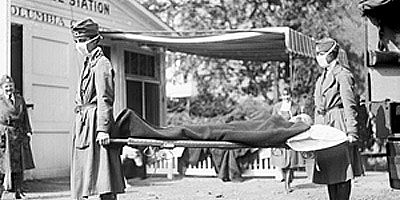 |
| Photo CDC |
The most serious pandemic in recent memory was the influenza pandemic of 1918. It was brought on by an H1N1 virus with avian genes. Although the origin of the virus is a subject of debate, it spread globally between 1918 and 1919. It was first discovered in military personnel in the US in the spring of 1918. One third of the world's population, or roughly 500 million people, are thought to have contracted this virus. At least 50 million deaths were thought to have occurred globally, with 675,000 of those deaths taking place in the United States.
6. World War II 1941
The harsh conditions of Germany's World War I surrender crippled the German economy and stoked anti-Allied sentiments as well as Jewish/communist conspiracies to subvert Germany from within. After coming to power in 1933, Adolf Hitler and the National Socialist (Nazi) party set out to create a "Aryan" German empire.
Like it did during World War I, the United States remained neutral as England, France, and other countries declared war on Hitler. However, following the 1941 attack on Pearl Harbor, the United States declared war on both Japan and Germany and joined the Allies in the valiant beach invasion at Normandy, which resulted in the deaths of more than 4,400 Allied soldiers in a matter of days. More than 12,500 American soldiers died on the wet rock during the Battle of Okinawa, the deadliest single battle for the US. The deadliest American conflict fought abroad, World War II claimed the lives of 405,400 American service members in total.
READ MORE: Top 10 Largest Warships in the World of All Time
7. The Korean War 1950
The Korean War, also known as "The Forgotten War," was a significant nuclear-armed conflict that ultimately claimed the lives of 36,914 U.S. service members. The invasion of South Korea by communist North Korea, backed by China and the Soviet Union on June 25, 1950, served as the UN's first major test. In response, the UN sent troops to defend South Korea. In the course of the bloody conflict, which lasted three years and involved nearly two million American soldiers, neither side gained nor lost any of the pre-war territory divided at the 38th parallel.
8. The Vietnam War in 1960s
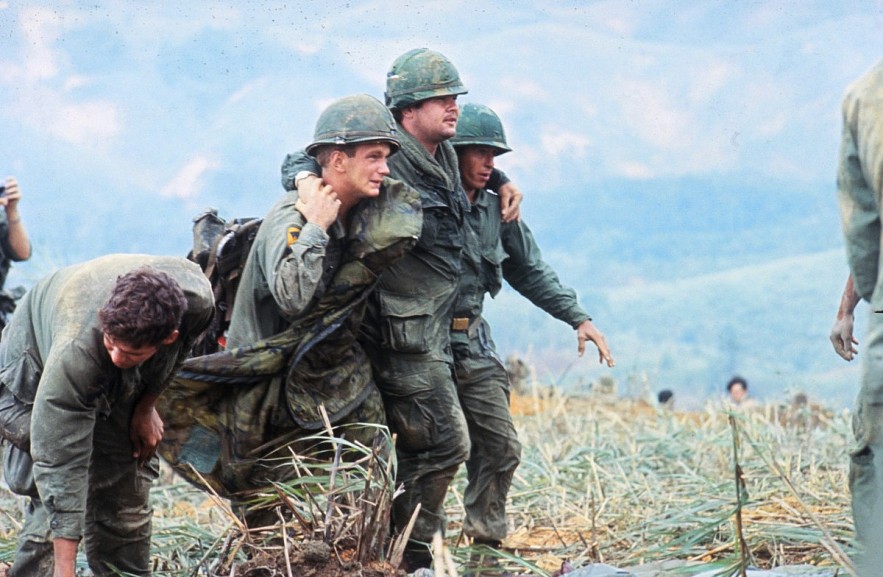 |
| Photo history |
As part of a larger containment strategy, the United States entered the war to stop a communist takeover of South Vietnam. Beginning in 1950, military advisers began to arrive. Early in the 1960s, American involvement increased, with troop levels tripling in 1961 and then again in 1962.
Three to four million Vietnamese, from both sides, as well as 1.5 to 2 million Laotians, Cambodians, and 58,159 American soldiers perished in the war. After August 15, 1973, direct U.S. military involvement was prohibited by the Case-Church Amendment, which was adopted by the U.S. Congress in response to the anti-war movement. Up until 1975, the US provided economic and military assistance. The Vietnam War came to an end when the North Vietnamese army took Saigon in April 1975. The following year, North and South Vietnam were united.
9. The HIV/AIDS Epidemic
Doctors in New York and California started documenting mysterious cases of uncommon pneumonia and cancers in 1981, mostly in gay men. The CDC named the condition acquired immunodeficiency syndrome, or AIDS, in 1982. It was later discovered in blood transfusion recipients and intravenous drug users.
Human immunodeficiency virus, or HIV, the virus that causes AIDS, was quickly discovered by researchers. However, doctors struggled to treat the crippling symptoms of the disease, which included rapid weight loss, painful sores, and susceptibility to pneumonia that could be fatal. The AIDS epidemic killed more than 50,000 Americans annually at its height in 1995.
HIV infections and AIDS-related deaths decreased dramatically in the late 1990s as a result of safe sex campaigns and the development of potent antiretroviral therapies, but the number of AIDS-related deaths in the US has remained constant at between 10,000 and 15,000 per year. In the more than 30 years that the AIDS epidemic has been going on, an estimated 700,000 Americans have perished.
10. 9/11
Now for the regrettable worst incident in American history. On the seemingly ordinary morning of September 11, 2001, the Islamist terrorist organization al-Qaeda launched a series of four coordinated terrorist attacks against the United States.
Four commercial airplanes traveling from the northeast to California on that "normal" morning had their flights hijacked in midair by 19 members of al-Qaeda. Their primary objective was to hit significant and well-known American buildings, and they succeeded in doing so by crashing into the Pentagon, the Pentagon's twin towers in New York, and one of the planes that was intended to crash into the White House or Capitol in Washington, D.C., but was successfully redirected by the passengers. On that terrible day, there were an estimated 2,996 fatalities, including First Responders, civilians, and terrorists.
| 2,996 people died in the September 11, 2001 attacks, including 2,977 victims and 19 hijackers who committed murder–suicide, while thousands more were injured. Of the 2,977 fatal victims, 2,753 were killed in the World Trade Center and the surrounding area, 184 at the Pentagon, and 40 in Pennsylvania. |
11. Sandy Hook School Shooting 2012
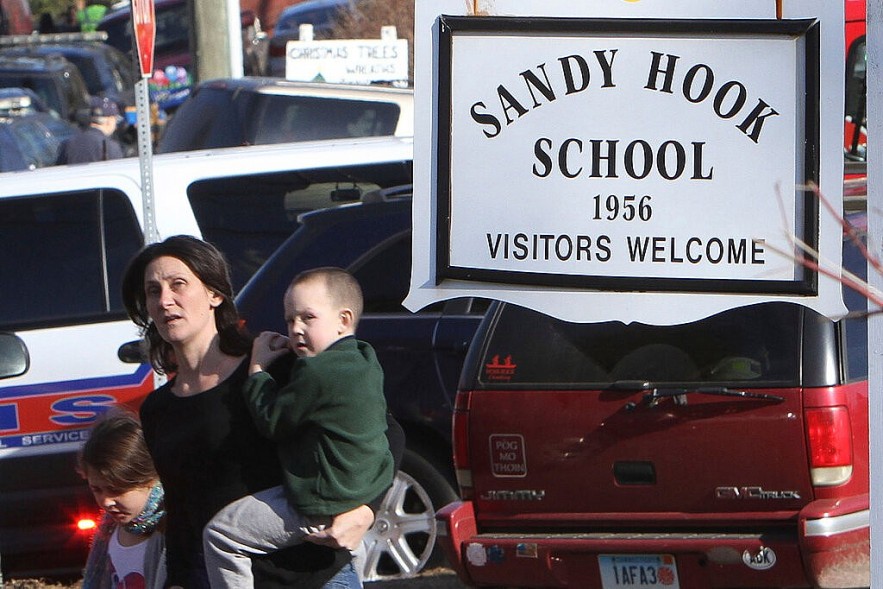 |
| Photo NY Times |
Nearly ten years ago, on December 14, 2012, one of the most unsettling events played out in front of the entire world. Twenty six and seven-year-old children as well as six adults, including teachers, the principal, and the school psychologist, were killed when a 20-year-old man named Adam Lanza drove to Sandy Hook Elementary School.
The whole story is scary, but what's really strange and unsettling is that it's unclear why a kid marched in and killed young children and the teachers who were trying to educate them. The shooter is also suspected of killing his mother before entering the school. On her bed, Mrs. Lanza was discovered with four bullet wounds to the head. After all, it took only five minutes for the shooting to end, and it was found that Adam Lanza had killed himself in the school's janitor closet.
Even after nine years of suffering, the reason behind everything remains a mystery. The sickest part of it all is that there was someone out there who was willing to take the lives of 20 defenseless, innocent children and innocent teachers who were trying to make a difference for nothing at all. To this day, Sandy Hook, Newtown, Connecticut as a whole, and America as a whole remain profoundly shaken.
12. Orlando shooting 2016
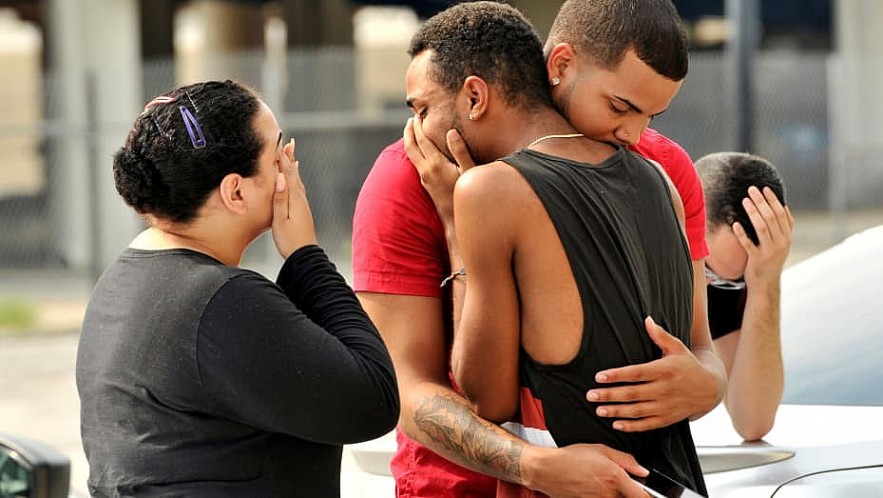 |
| Photo CNBC |
The Pulse nightclub shooting, also known as the Orlando shooting of 2016, was a mass shooting that occurred in Orlando, Florida, in the early morning hours of June 12, 2016, leaving 49 people dead and more than 50 injured. Up until that point, it had been the deadliest mass shooting in American history.
Omar Mateen, the gunman, was a 29-year-old American citizen who was born to Afghan parents in Queens, New York. After Mateen informed his coworkers at a security company that he had connections to al-Qaeda and Hezbollah, the Federal Bureau of Investigation designated him as "a person of interest" and opened a preliminary investigation into him in May 2013. Although no charges were brought against Mateen following the 10-month investigation, the FBI interrogated him in 2014 after one of his friends started carrying out suicide bombings for the Nusrah Front, a terrorist group in Syria. Mateen later revealed to a friend that he had been watching jihadist videos produced by Anwar al-Awlaki, an al-Qaeda spokesman, and that friend immediately alerted law enforcement. The second investigation, like the first, produced no evidence that could be used, so it was closed.
13. The COVID-19 Pandemic: 1,000,000 deaths
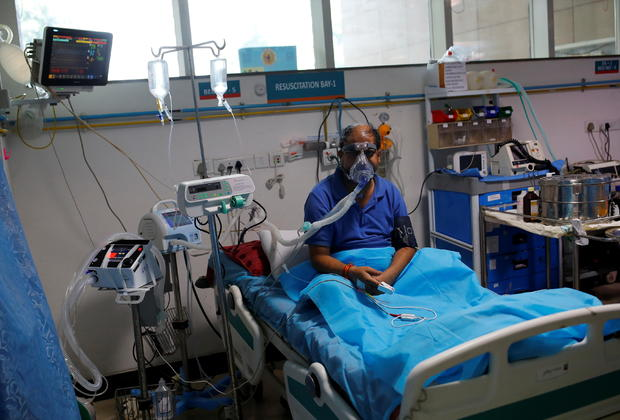 |
| Photo REUTERS |
The first reports of a new respiratory disease that was deadly and contagious and had its center in Wuhan, China, started to surface in early 2020. The new coronavirus strain claimed its first victims in the United States in February, and by March COVID-19, as the illness was then known, had erupted into a full-blown public health emergency, leading to widespread closures of American businesses and schools as well as stay-at-home orders in states across the country.
| The 1 million toll is like the entire state of Delaware was killed over 2 years, or the population of San Jose, CA, the 10th largest city in the U.S., vanished. But suffering is widespread globally. |
In the first three months of the pandemic, New York saw the greatest increase in infections and fatalities, recording more than 200,000 positive cases and at least 14,000 deaths from COVID-19 that were confirmed in the laboratory. Over the course of the summer, as public health regulations were loosened, the virus spread to new hotspots and steadily claimed more and more lives, eventually surpassing the 9/11 attacks in terms of daily death tolls by late fall.
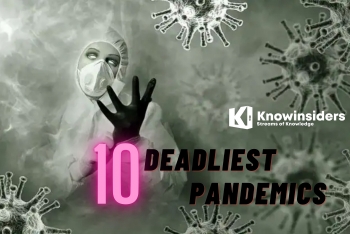 Top 10 Deadliest Pandemics In The World Of All Time Top 10 Deadliest Pandemics In The World Of All Time Check out the top 10 World's Deadliest Epidemics or Pandemics In History |
 Top 13 Single Deadliest Days In US History Top 13 Single Deadliest Days In US History What are the deadliest single days in the US? How many casualties recorded on those days? From Pearl Harbor, 9/11 to COVID-19, we have picked ... |
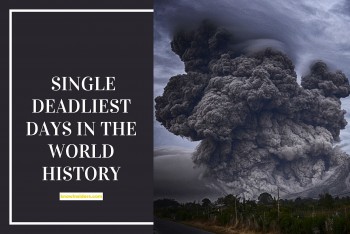 Top 9 Single Deadliest Days In The World History Top 9 Single Deadliest Days In The World History The world witnessed deadliest days with hundreds of thousands of deaths. What days are the deadliest in the world history? |



























